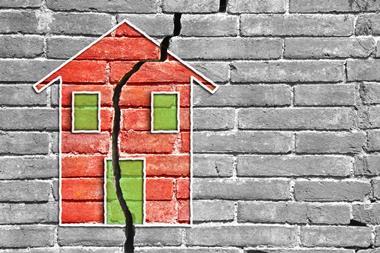Industry experts weigh in on the causes why high net worth subsidence claims are rising and discuss how best to respond to this risk
WE ASKED: “What is driving the uptick in high net worth (HNW) subsidence claims and how can the industry mitigate this?”
Eleanor Moore, director of private clients, Broadway Insurance Brokers
All the data suggests that we’re seeing record levels of claims arising from subsidence affecting properties of all values.

In that respect, the ground really is shifting beneath the feet of homeowners and the insurance industry.
There seems little doubt that climate change is the principal reason for what we’re seeing - but, even so, there are regional variations in how that manifests itself.
For instance, in the north of the UK, a significant number of subsidence claims are due to tree roots or cracked drains, whereas in the south, problems are more likely to result from the repeated swelling and shrinking of clay soils. This undermines building foundations.
While these factors can cause issues for all homeowners, the cost involved in addressing subsidence is greater for those with more expensive properties.
In some cases I’ve dealt with, we’re talking about six-figure sums - where assessments can take months or even years before the structural repairs can start.
Any subsidence claim involves tremendous strain for insureds – all the more so if they’re not updated about the progress of their claim.
Given that the weather is arguably beyond the control of homeowners and insurers, it’s far better to make policyholders aware of the symptoms of subsidence before it develops, as well as flag their responsibilities to maintain their properties.
This can also reinforce insureds’ understanding of what their policies will or will not cover.
Fabrice Watson, art and private client claims manager, Ecclesiastical Insurance

Last year saw extreme weather conditions and the dry, hot summer resulted in a record number of subsidence claims – up 80% on 2021 according to our numbers.
One of the main causes of subsidence is clay shrinkage and we saw a particularly high number of claims from HNW clients in the south east and along the M4 corridor, where there is a prevalence of highly shrinkable clay.
National weather service The Meteorological Office has predicted another hot and dry summer in 2023 and we expect the volume of subsidence claims to rise over time due to climate change and increasingly warmer weather conditions.
We recommend clients take a proactive approach to managing subsidence issues, particularly in areas of clay soil.
Reviewing the proximity of surrounding trees and inspecting drainage is highly recommended to help prevent possible subsidence issues in the future.
Clients should avoid overplanting trees and hedges, tailor the trees planted to the size of their garden and ensure these are planted at a safe distance away from the property.
If clients have any concerns about vegetation at their property, it’s always best to seek the advice of an arborist.
If a client suspects they have a subsidence issue, it’s important they contact their insurer for advice and to arrange investigations to determine the cause and suitable remedial action.
Alex Wakefield, executive adjuster, McLarens
The homes of the wealthy are no less susceptible to the forces that can affect any building and bring about damage from subsidence.

The hot and dry summer of 2022, for instance, resulted in damage across the entire housing market. Increases in both mitigation and reinstatement costs have put claims for HNW properties in the spotlight.
High-end homes do often present additional risks and challenges.
Factors that can increase the risk of movement include larger gardens planted with – often protected – vegetation. This can influence changes in soil volume, shallow foundations on older, character homes and concentrations of houses in areas where shrinkable clay soils prevail.
Most HNW homes are well loved and maintained to a high standard. Engagement with homeowners over a few simple factors can be built into annual policy reviews with brokers or in direct communication with policyholders.
This engagement can include discussing the need for ongoing maintenance of vegetation and water services to the property, together with raising awareness of how buildings move and how damage can manifest.
These simple measures can be an effective approach in preventing issues from arising in the first place, or identifying them before they become a bigger problem.
Hosted by comedian and actor Tom Allen, 34 Gold, 23 Silver and 22 Bronze awards were handed out across an amazing 34 categories recognising brilliance and innovation right across the breadth of UK general insurance.



















































No comments yet